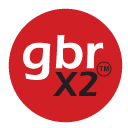
Computer-aided design (CAD) is the use of computers to aid in the creation, modification, analysis, or optimization of a design. This software is used to increase the productivity of the designer, improve the quality of design, improve communications through documentation, and to create a database for manufacturing. Designs made through CAD software help protect products and inventions when used in patent applications. CAD output is often in the form of electronic files for print, machining, or other manufacturing operations. The terms computer-aided drafting (CAD) and computer-aided design and drafting (CADD) are also used.

Alias Systems Corporation, headquartered in Toronto, Ontario, Canada, was a software company that produced high-end 3D graphics software. Alias was eventually bought by Autodesk.

Mentor Graphics Corporation was a US-based electronic design automation (EDA) multinational corporation for electrical engineering and electronics, headquartered in Wilsonville, Oregon. Founded in 1981, the company distributed products that assist in electronic design automation, simulation tools for analog mixed-signal design, VPN solutions, and fluid dynamics and heat transfer tools. The company leveraged Apollo Computer workstations to differentiate itself within the computer-aided engineering (CAE) market with its software and hardware.
An application program is a computer program designed to carry out a specific task other than one relating to the operation of the computer itself, typically to be used by end-users. Word processors, media players, and accounting software are examples. The collective noun "application software" refers to all applications collectively. The other principal classifications of software are system software, relating to the operation of the computer, and utility software ("utilities").

The Gerber format is an open, ASCII, vector format for printed circuit board (PCB) designs. It is the de facto standard used by PCB industry software to describe the printed circuit board images: copper layers, solder mask, legend, drill data, etc. The standard file extension is .GBR or .gbr though other extensions like .GB, .geb or .gerber are also used.
Autodesk Media and Entertainment is a division of Autodesk which offers animation and visual effects products, and was formed by the combination of multiple acquisitions. In 2018, the company began operating as a single operating segment and reporting unit.
Media 100 is a manufacturer of video editing software and non-linear editing systems designed for professional cutting and editing. The editing systems can be used with AJA Video Systems, Blackmagic or matrox hardware or as software-only solution with Firewire support and run exclusively on Macs. The current released software version is Media 100 Suite Version 2.1.8 and runs on macOS 10.14.x (Mojave), macOS 10.13.4, macOS 10.12 (Sierra), OS X 10.11, OS X 10.10 (Yosemite), OS X 10.6.7, 10.7.x (Lion), 10.8.x, 10.9.x (Mavericks) and 10.10.x (Yosemite).
The Advanced Visualizer (TAV), a 3D graphics software package, was the flagship product of Wavefront Technologies from the 1980s until the 1990s.

Zebra Technologies Corporation is an American mobile computing company specializing in technology used to sense, analyze, and act in real time, sometimes known as smart data capture. The company manufactures and sells marking, tracking, and computer printing technologies. Its products include mobile computers and tablets, software, thermal barcode label and receipt printers, RFID smart label printers/encoders/fixed & handheld readers/antennas, autonomous mobile robots (AMR’s) & machine vision (MV), and fixed industrial scanning hardware & software.
BIOVIA is a software company headquartered in the United States, with representation in Europe and Asia. It provides software for chemical, materials and bioscience research for the pharmaceutical, biotechnology, consumer packaged goods, aerospace, energy and chemical industries.
Stardent Computer, Inc. was a manufacturer of graphics supercomputer workstations in the late 1980s. The company was formed in 1989 when Ardent Computer Corporation and Stellar Computer Inc. merged.
Heinz Joseph Gerber was an American inventor and businessman. An Austrian-born Jewish Holocaust survivor who immigrated in 1940, he pioneered computer-automated manufacturing systems for an array of industries. Described as the "Thomas Edison of manufacturing", he was one of the first to recognize and develop the productivity-enhancing potential for computer automation in skill-intensive industrial sectors.
Thermwood Corporation was founded in 1969 in Dale, Indiana. It was established as a "plastic molder of wood grained parts for the furniture industry."
The Gores Group, LLC is a private equity firm specializing in acquiring and partnering with mature and growing businesses. The company was founded in 1987 by its CEO and chairman, Alec E. Gores.
Inventory management software is a software system for tracking inventory levels, orders, sales and deliveries. It can also be used in the manufacturing industry to create a work order, bill of materials and other production-related documents. Companies use inventory management software to avoid product overstock and outages. It is a tool for organizing inventory data that before was generally stored in hard-copy form or in spreadsheets.

UGS was a computer software company headquartered in Plano, Texas, specializing in 3D & 2D Product Lifecycle Management (PLM) software. Its operations were amalgamated into the Siemens Digital Industries Software business unit of Siemens Industry Automation division, when Siemens completed the US$3.5 billion acquisition of UGS on May 7, 2007.

ODB++ is a proprietary CAD-to-CAM data exchange format used in the design and manufacture of electronic devices. Its purpose is to exchange printed circuit board design information between design and manufacturing and between design tools from different EDA/ECAD vendors. It was originally developed by Valor Computerized Systems, Ltd. as the job description format for their CAM system.
Siemens Digital Industries Software is an American computer software company specializing in 3D & 2D Product Lifecycle Management (PLM) software. The company is a business unit of Siemens, operates under the legal name of Siemens Industry Software Inc, and is headquartered in Plano, Texas.
Omnicell, Inc. is an American multinational healthcare technology company headquartered in Mountain View, California. It manufactures automated systems for medication management in hospitals and other healthcare settings, and medication adherence packaging and patient engagement software used by retail pharmacies. Its products are sold under the brand names Omnicell and EnlivenHealth.







